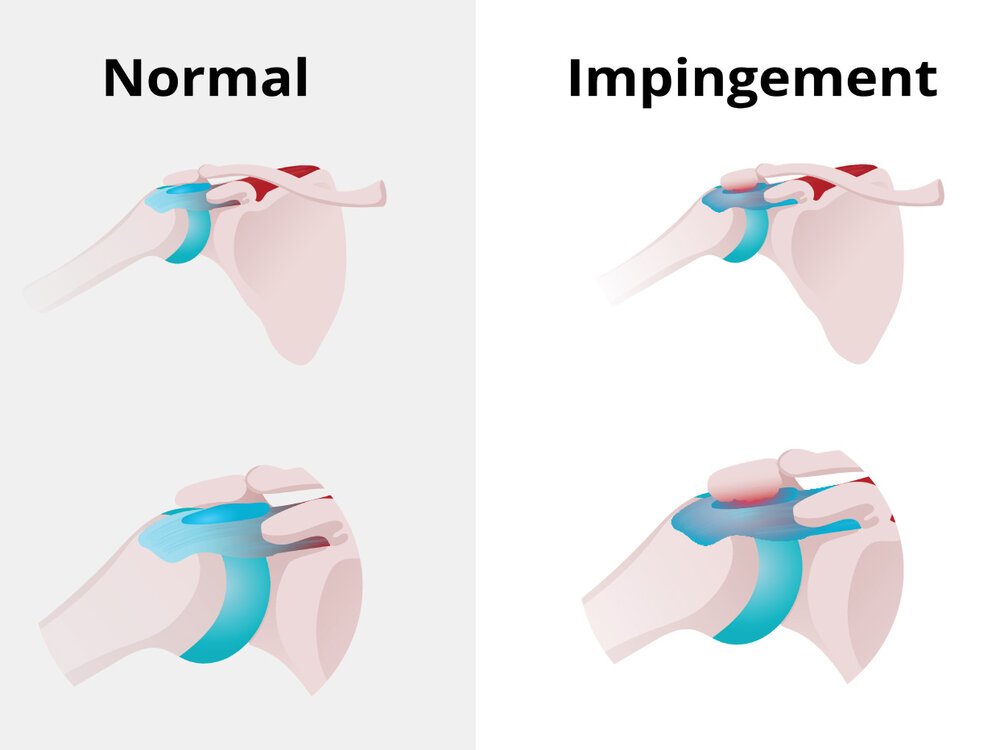Table of Contents
- Introduction
- Understanding Shoulder Impingement
- Benefits of Physical Therapy
- Effective Rehabilitation Exercises
- Home Remedies and Self-Care Strategies
- Preventive Measures for Shoulder Impingement
- Questions and Answers
- Conclusion
As a licensed physical therapist, I've been fortunate to work with many individuals dealing with various musculoskeletal conditions. One of the most common issues I encounter in my home health physical therapy practice is shoulder impingement. This condition can significantly decrease one's quality of life. It may prevent them from doing simple activities like taking something from a high shelf or throwing a ball.

Shoulder impingement is also known as impingement syndrome . It happens when the tendons of the rotator cuff are compressed. This often leads to pain and discomfort during movement. This can result from various factors, including age, repetitive overhead movements, or even physical trauma. Treatment for shoulder impingement exercises does help.
Understanding Shoulder Impingement
The shoulder is a complex joint that allows a wide range of motion, more than any other joint in the body. Comprising several bones, muscles, and tendons, it's designed to provide strength and flexibility. However, this complexity also makes it vulnerable to conditions such as shoulder impingement.
Shoulder impingement happens when the rotator cuff tendons or the subacromial bursa are compressed. The subacromial bursa is a fluid-filled sac that helps reduce friction in the shoulder.
This occurs when the arm is raised above the head. The acromion, which is the "roof" of the shoulder, compresses the soft tissues. Over time, this repetitive squeezing, known as impingement, can cause irritation, inflammation, and pain, limiting the shoulder's range of motion.
Factors contributing to shoulder impingement can be anatomical (such as a naturally narrow subacromial space) or functional (imbalances in muscle strength, poor posture, or repetitive overhead movements in sports/jobs). For more on shoulder anatomy, check out this resource from the American Academy of Orthopaedic Surgeons .
Benefits of Physical Therapy
Physical therapy is often the first line of defense against shoulder impingement before more invasive treatments are considered. It addresses the root cause of the problem with exercises, stretching, and posture correction to relieve pressure on the rotator cuff. Techniques such as massage, heat/cold therapy, and electrical stimulation can reduce inflammation and pain. Physical therapy also empowers you with self-care strategies and home exercises to prevent future flare-ups. For more details, see this article from the American Physical Therapy Association .
Effective Rehabilitation Exercises
Exercise is a cornerstone of physical therapy for shoulder impingement. Strengthening muscles, improving flexibility, and increasing range of motion can all alleviate impingement symptoms.
Pendulum Exercise
Bend at the waist and let your affected arm hang down, gently swinging it in small circles.
Doorway Stretch
Stand in a doorway, holding onto the sides at shoulder height. Lean forward until you feel a gentle stretch in your shoulders.
Scapular Squeezes
Stand or sit with a straight back. Squeeze your shoulder blades together as if holding a pencil between them.
Your physical therapist will customize an exercise program to your needs. For more details and visuals, see the Cleveland Clinic resource.
Home Remedies and Self-Care Strategies

Home remedies can complement therapy: apply ice packs for 15-20 minutes to reduce inflammation, or use heat for muscle relaxation. NSAIDs (as directed by a healthcare provider) can help with pain and swelling. Rest and activity modification (especially avoiding overhead motions) can aid healing. A balanced diet with anti-inflammatory foods supports recovery. For more on home remedies, see Healthline.
Preventive Measures for Shoulder Impingement
Preventing shoulder impingement involves proper technique, strength training, and flexibility exercises. Avoid repetitive overhead movements, maintain good posture, and strengthen your shoulder and core muscles. Incorporating these lifestyle changes can significantly reduce your risk of impingement.
Questions and Answers
- What is the typical recovery time for shoulder impingement with regular physical therapy?
It varies by severity, overall health, and adherence to exercises. Minor cases might improve in weeks; more severe cases can take months. Consult your provider for a personalized timeline.
- What are the risks if shoulder impingement is not treated?
Untreated impingement can worsen, leading to rotator cuff tendinitis, tears, frozen shoulder, or chronic pain and limited function. Seek treatment early to prevent these complications.
- How can I modify daily activities to prevent exacerbating symptoms?
Maintain good posture, avoid overhead tasks, modify sleeping positions, take breaks, lift properly, and stay active with safe exercises. Consult a provider for personalized recommendations.
- How often should I perform recommended exercises?
Typically 2-3 times per day, but it varies. Follow your physical therapist’s guidelines and avoid overexertion or pain.
- How does diet impact recovery from shoulder impingement?
Adequate protein, vitamin C, omega-3s, antioxidants, and hydration help tissue repair and reduce inflammation. Maintaining a healthy weight can also reduce stress on joints.
- What signs indicate I should consult my therapist or physician?
Persistent or worsening pain, decreased range of motion, swelling, weakness, disturbed sleep, numbness, or lack of improvement with therapy are cues to contact your provider.
- How can I maintain shoulder health after recovery?
Continue exercises, warm up and cool down, keep good posture, ensure an ergonomic workspace, and schedule regular check-ups. Listen to your body to catch issues early.
- What are the stages of shoulder impingement, and how do treatments differ?
Stage 1 (mild, often in younger individuals) may respond to rest, ice, and NSAIDs. Stage 2 (tendonitis/fibrosis) may require injections if persistent. Stage 3 (bone spurs/tendon rupture) might need surgery if severe. Physical therapy is crucial in all stages.
- Are there complementary therapies like massage or dry needling?
Yes! Massage, dry needling, acupuncture, and even yoga or Tai Chi can aid recovery when combined with conventional treatments. Always consult your provider first.
Shoulder impingement can cause pain and limit mobility, but with the right approach— including physical therapy, home remedies, and preventive measures—you can regain function. Recovery continues at home; stay active, follow prescribed treatments, and adopt preventive habits. Patience and persistence will pay off in the long run. As your home health physical therapist, I'm here to support your journey toward a pain-free shoulder and improved quality of life.
Together, we can overcome this challenge and move forward towards better health.
By Trudy, Physical Therapist | Updated on May 16, 2023
See you soon,
//❤️ Trudy//



